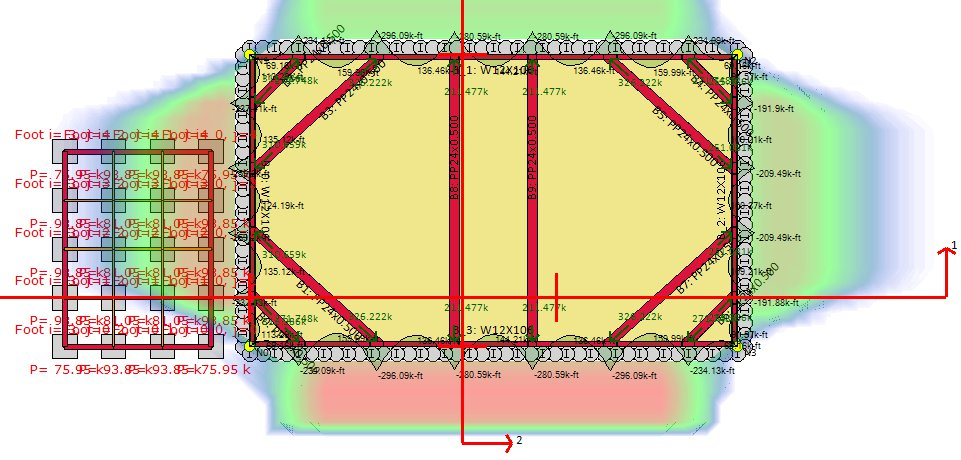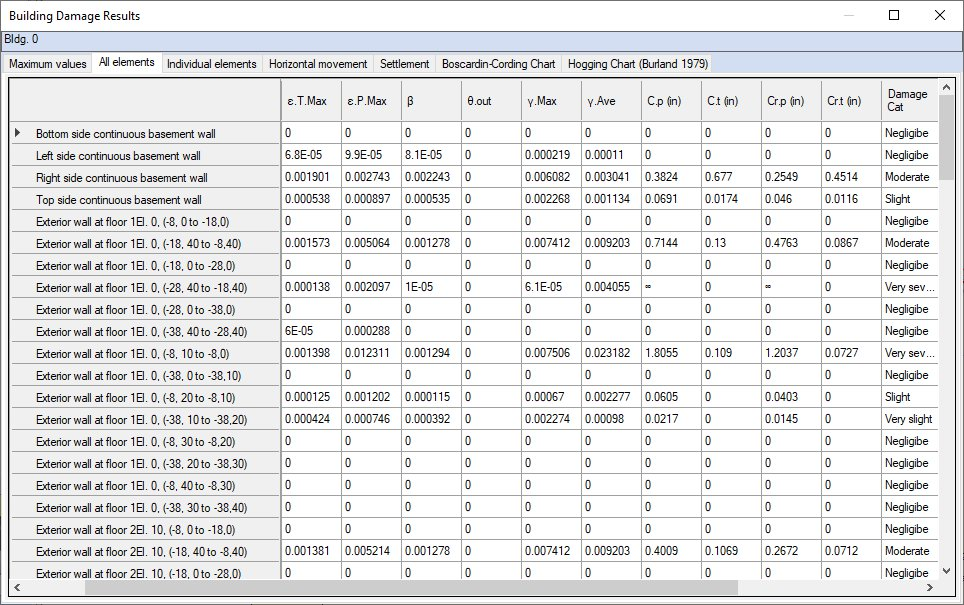The Importance of Predicting Damages on Adjacent Structures
Introduction
Construction of deep excavations next or close to adjacent existing structures requires extra care by design engineers. The potential impact on neighboring buildings, in terms of structural stability and damage, is a critical concern for engineers, contractors, and project stakeholders. If not done right, deep excavations can lead to unacceptable levels ground movement, settlement, and even structural damage, making it imperative to accurately predict and mitigate these effects. This is where specialized software, such as our superior DeepEX software suite, plays a pivotal role in ensuring the safety and structural integrity of adjacent buildings.
Deep Excavation and Adjacent Structures
When conducting deep excavations in urban environments, the proximity of existing structures demands a thorough understanding of the potential consequences. Excavation processes can exert external loads on neighboring buildings, which, if not managed properly, can lead to a range of adverse effects. These effects include ground settlement, cracking, tilting, and even more severe structural damage. Such outcomes can have significant safety implications and financial repercussions for project stakeholders.

Figure 1: Building damage assessment theory in DeepEX software
The Importance of Predicting Behaviors
Accurately predicting the behaviors of adjacent structures during excavation is crucial for several reasons:
Safety:
The safety of occupants in adjacent buildings and construction workers is of paramount importance. Unpredictable structural damages can pose severe risks, leading to accidents and injuries.
Cost Efficiency:
Unexpected damages result in costly repairs and delays, impacting the project's budget and schedule. Early prediction of potential issues allows for effective risk mitigation.
Compliance:
Regulatory bodies often require projects to adhere to strict safety and environmental standards. Failure to predict and prevent damages can result in legal repercussions.
How DeepEX Software Addresses the Issue
DeepEX is a powerful software solution designed to address the complexities of deep excavation projects and the potential impact on adjacent structures. This software offers a comprehensive suite of tools for engineers and contractors, enabling them to:
Design Excavation Shoring Systems:
DeepEX can create and analyze excavation shoring systems, ensuring they are robust and capable of withstanding external loads from nearby structures.
Design Retaining Walls and Supports:
The software provides a complete design and analysis of excavation retaining walls and support systems, optimizing their performance.
Estimate Ground Settlements:
DeepEX accurately estimates ground settlements around the excavation site, aiding in the identification of potential risks to adjacent structures.
Predict Damages on Existing Buildings:
The software offers in-depth assessments, including critical strains, angular distortions, crack widths, damage categories, and more for each wall of the building.
A case stud:
In the following case study, we delve into the examination of a 30-foot deep excavation model situated in close proximity to an existing building. The excavation design incorporates two tiers of struts for added stability. We will showcase the outcomes of this analysis, along with a comprehensive evaluation of the structural integrity of the adjacent building's walls. Our analysis is conducted through the utilization of the state-of-the-art DeepEX - Shoring design software, employing the conventional Limit Equilibrium analysis method (LEM).
The assessment delivered by DeepEX for building damage comprises critical strain measurements, crack widths, angular distortions, damage categorization, and an array of additional data applicable to each building wall. This detailed analysis equips us with invaluable insights into the effect of our new excavation on the neighboring structure. By interpreting these results, we can proactively anticipate potential issues and make well-informed decisions regarding the deep excavation shoring system's implementation.

Figure 2: DeepEX Software – Deep excavation adjacent to an existing building, 2D model analysis

Figure 3: 3D Model analysis results in DeepEX software

Figure 4: DeepEX software – Damage assessment results for each building wall
Conclusion:
Predicting and mitigating the damages that deep excavations can cause to adjacent structures is of paramount importance. The use of sophisticated software solutions like DeepEX empowers engineers and contractors to better safeguard the safety, integrity, and financial viability of their projects.
By leveraging DeepEX, professionals can accurately assess the risks associated with deep excavations, design robust shoring systems, and estimate settlements and potential structural damages. This software is a valuable asset for any construction project involving deep excavations, as it not only enhances safety and compliance but also leads to cost-effective and efficient project execution.
Engineers and contractors are encouraged to explore the capabilities of DeepEX and incorporate it into their engineering practice.
By doing so, they can elevate the quality of their work, ensure safer construction sites, and ultimately contribute to the success of their projects. Try DeepEX today, and take the first step toward a more secure and efficient future in construction and civil engineering.
Book A free web presentation:


